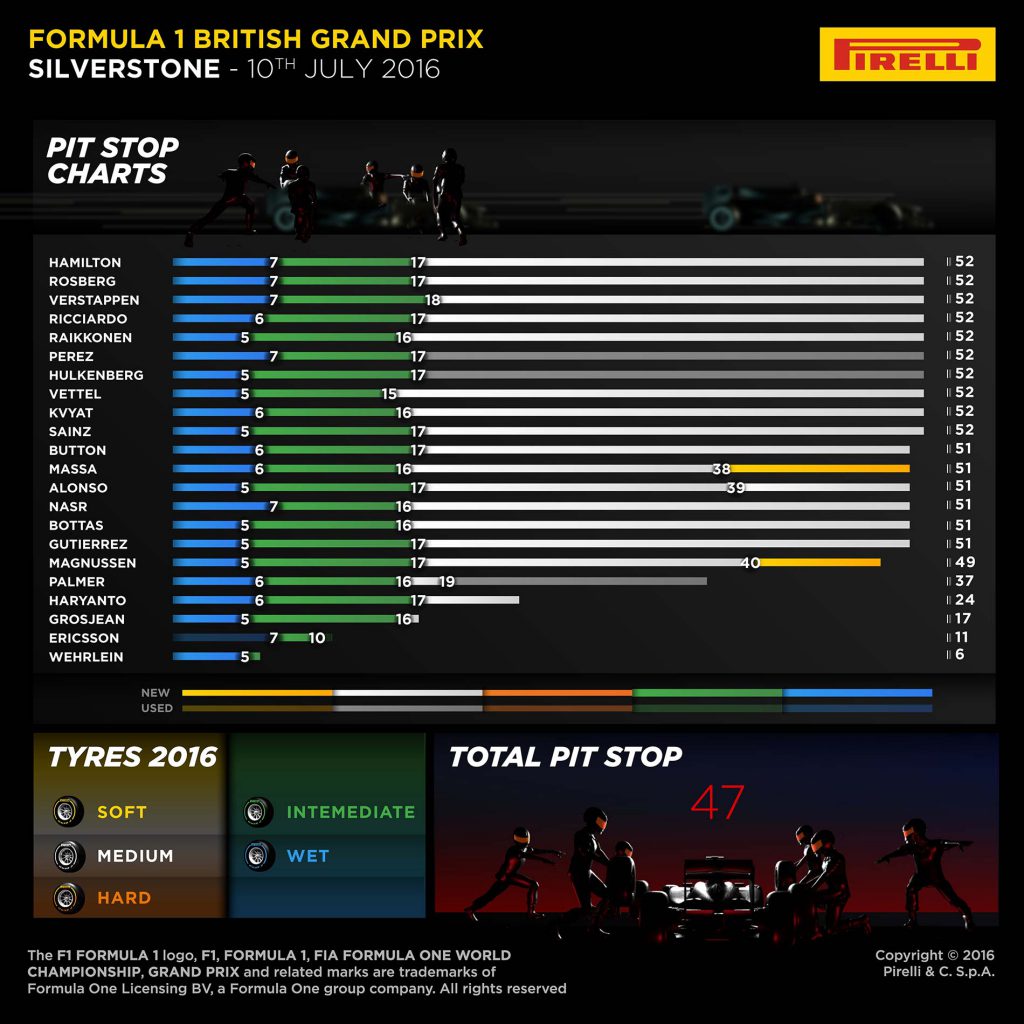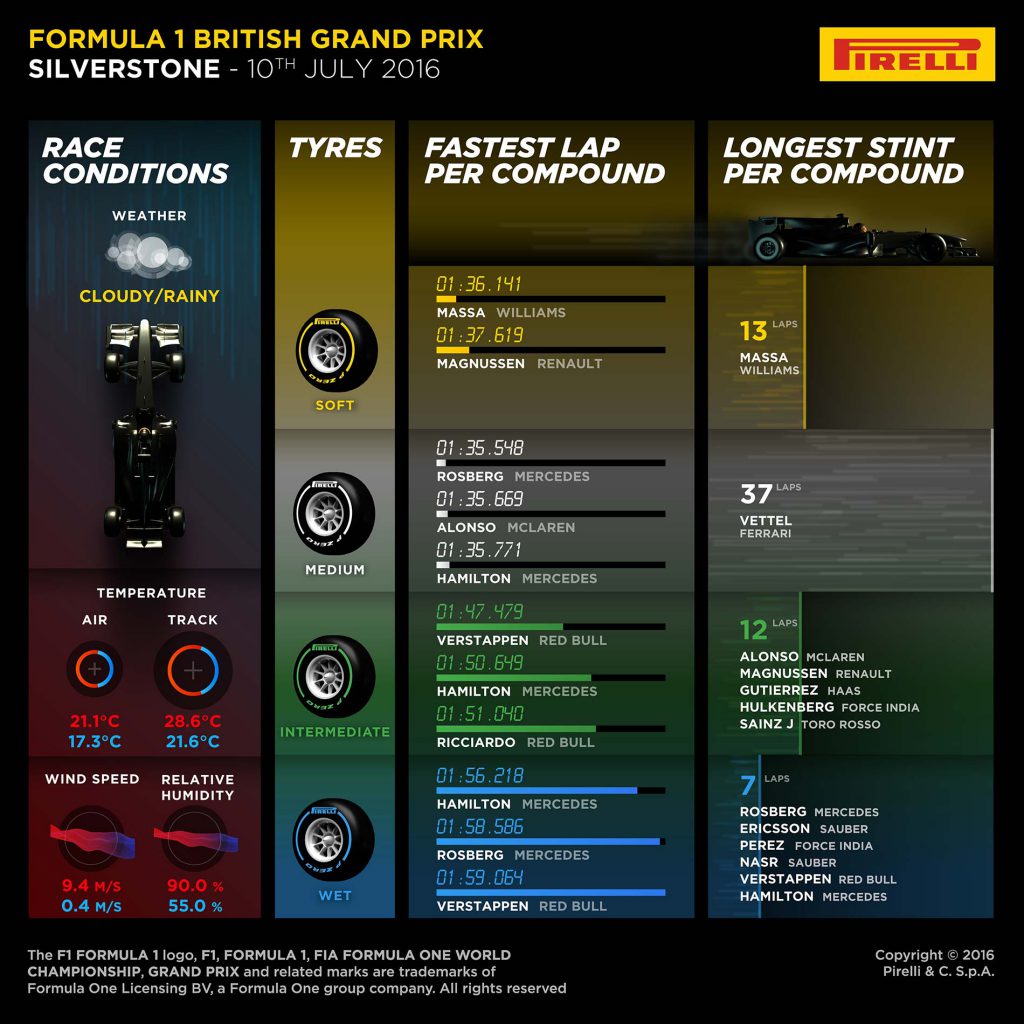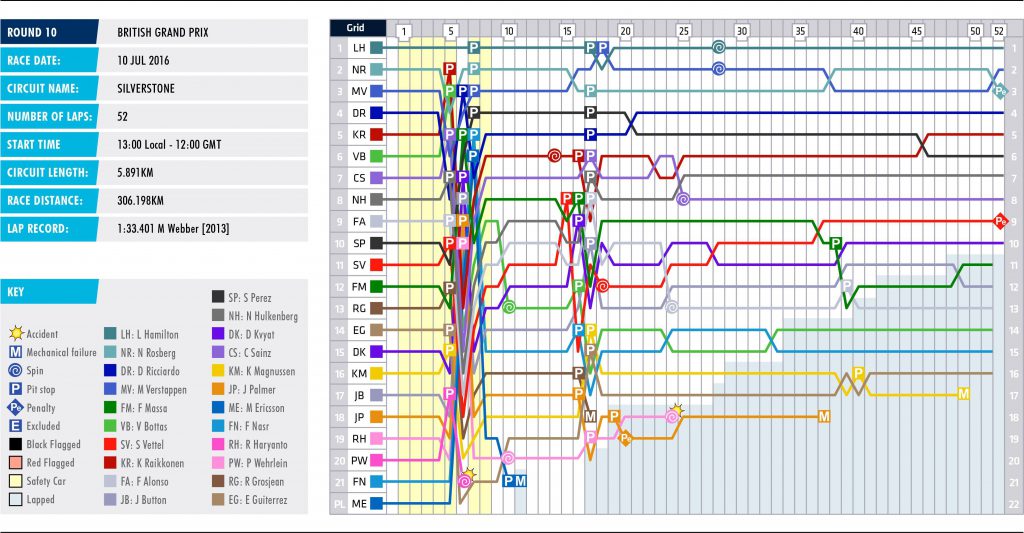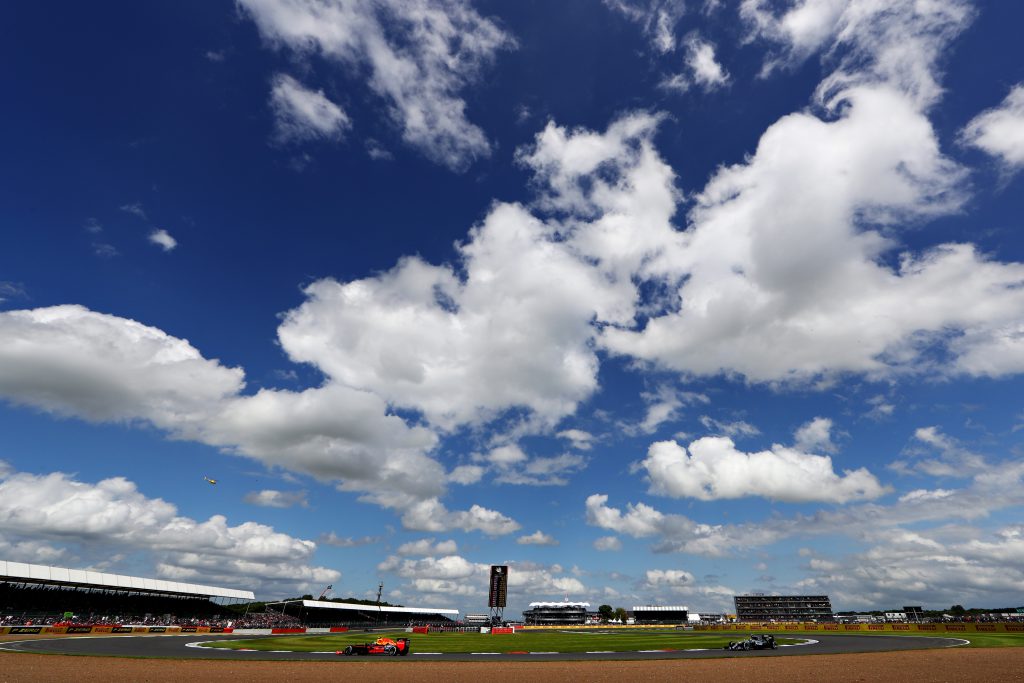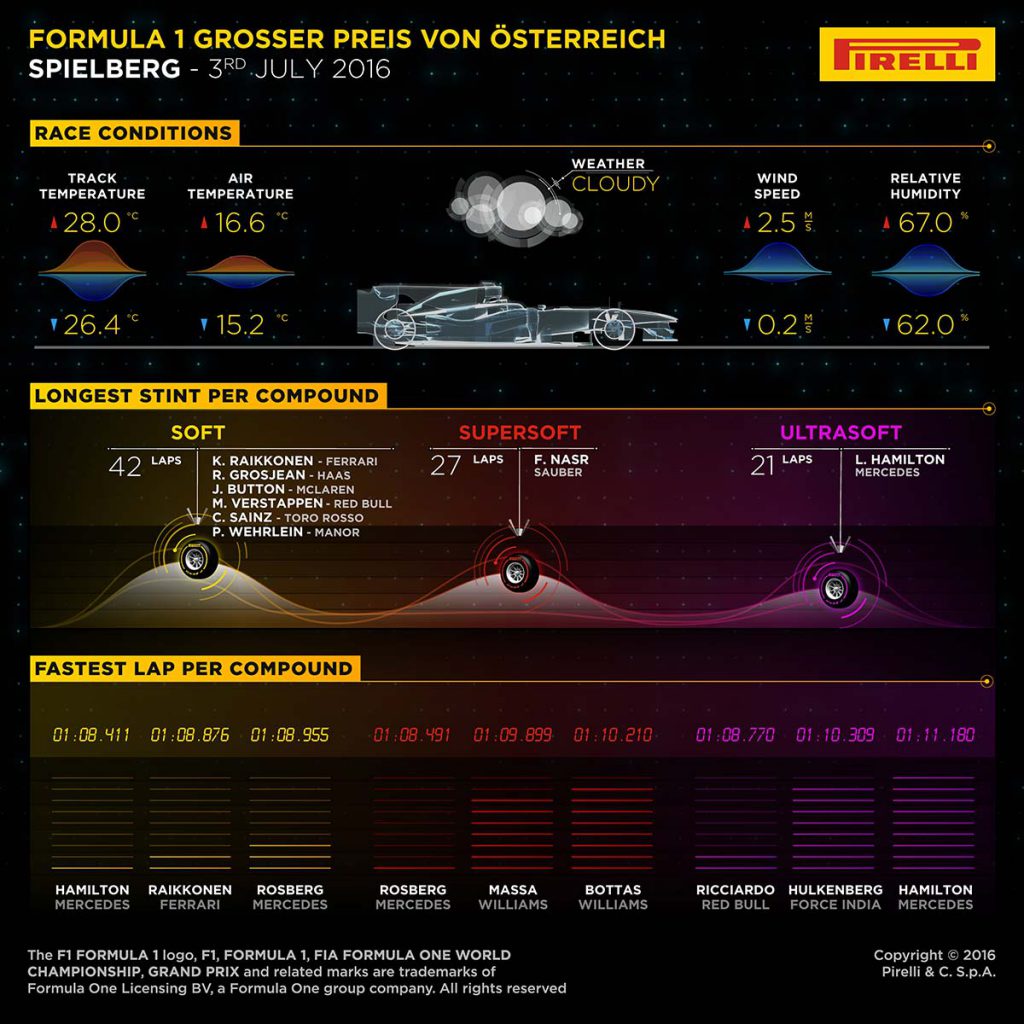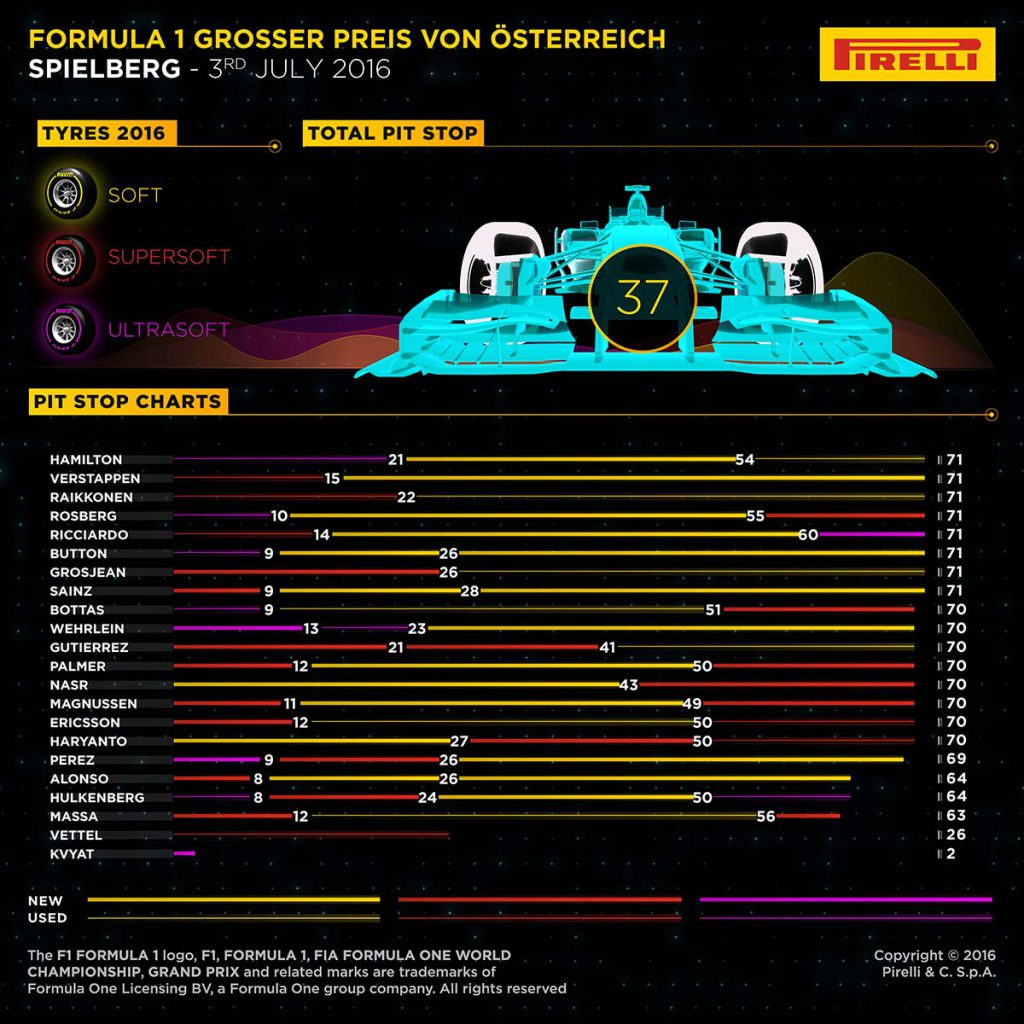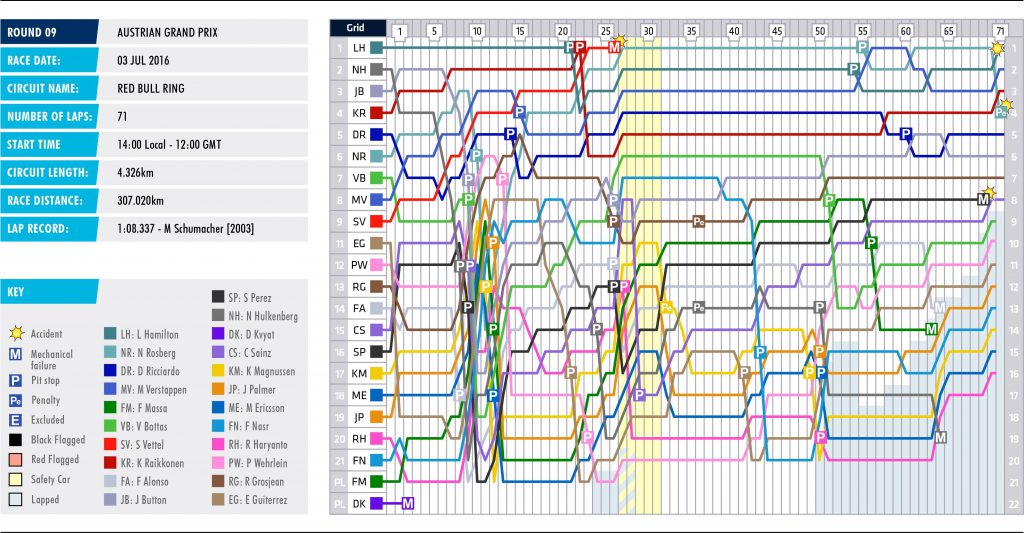Boletim Estratégico: Grande Prêmio da Hungria 2016
26 Jul 2016
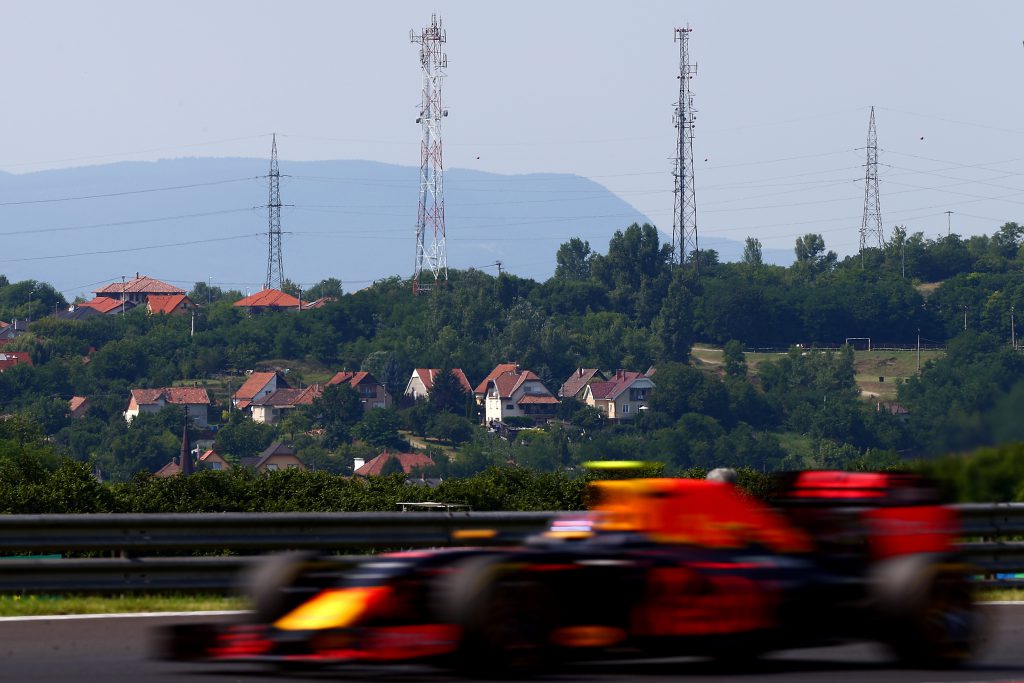
11ª Etapa – 70 Voltas – 4.381km por volta – 306.630km distância total – desgaste médio de pneus
Hungarian GP F1 Strategy Report Podcast – our host Michael Lamonato is joined by Jack Leslie from JLF1.
O GP da Hungria iniciou a segunda metade da temporada de 2016 com grandes batalhas e ultrapassagens, além de tensão com a aproximação das duas Mercedes na ponta.
Hamilton se aproveitou de uma grande largada e já assumiu a liderança na curva 1, controlando a prova desde o início. Rosberg teve que se contentar com a 2ª posição enquanto Ricciardo segurou Vettel nas voltas finais para subir ao pódio mais uma vez. Com uma corrida recheada de estratégias, temos muito o que comentar no boletim de hoje.
Duas paradas funcionando
Como havia sido previsto pela Pirelli antes da corrida, uma estratégia de duas paradas com o primeiro stint de super macios e mais dois com macios foi a mais popular da prova. Ainda vimos alguns pilotos tentando se aventurar com algumas estratégias alternativas, mas em geral, o grid optou pelas duas paradas.
No entanto, o que a fornecedora italiana não conseguiu prever foi o momento de cada parada. As suposições eram que alguns estariam se livrando dos pneus vermelhos antes da volta 10 e as recomendações dadas em Silverstone se repetiram em Budapeste, 14 voltas no super macios e 29 nos macios, ambas foram prontamente ignoradas.
Mesmo com as temperaturas de pista mais altas da temporada, os macios e super macios funcionaram muito bem em Hungaroring e sua nova superfície, mais aderente e menos ondulada. O novo pavimento é menos abrasivo, proporcionando não só voltas mais rápidas, como também stints mais prolongados.
Hamilton no controle
O vencedor da prova foi para uma estratégia tradicional de dois pit-stops, parando na volta 16 para trocar de super macios para macios e subsequentemente calçando outro set dos amarelos na volta 41. Em ambas paradas, o inglês completou o undercut em Rosberg. Obviamente, por ser o líder, Hamilton teve a preferência, contudo, por um instante essa escrita quase foi alterada, já que as Red Bulls encostavam perigosamente em Rosberg.
O tricampeão pareceu estar no controle total durante toda a corrida, talvez até diminuindo um pouco o ritmo para afastar seu companheiro de equipe. O alemão se fez presente da largada à bandeirada, entretanto, não foi rápido o bastante para arriscar uma ultrapassagem.
Rosberg até se aproximou bastante em algumas oportunidades, parcialmente auxiliado pelo tráfego e por um pequeno erro de Hamilton na curva 12, mas mesmo assim, Nico não parecia ter gasolina no tanque para brigar pela liderança e o inglês sempre tinha uma resposta imediata para os atrevimentos de seu companheiro de equipe.
Kimi aposta em algo diferente
Um dos poucos pilotos que decidiu se aventurar nas estratégias alternativas foi Kimi Raikkonen, talvez por força das circunstâncias.
O sábado não foi dos melhores para o finlandês, que alinhou no grid em 14º com pneus macios, ao contrário de boa parte do pelotão. Contando com o ótimo ritmo de corrida da Ferrari, Kimi conseguiu escalar o pelotão com autoridade e já estava no top 10 na volta 29, quando fez sua primeira parada e calçou super macios.
A performance das três primeiras equipes é tão superior que não é tão difícil se recuperar de um sábado desastroso com uma estratégia alternativa no domingo. Um stint agressivo nos super macios colocou o finlandês de volta na briga, mas preso atrás de Max Verstappen, uma briga que destruiu seus pneus (e asa dianteira) nas últimas voltas da prova.
Sexto foi um ótimo resultado e seu ritmo durante a corrida foi impressionante, o que nos faz pensar como o roteiro mudaria se Kimi tivesse largado no topo do grid. Claro, Verstappen ficou preso atrás do finlandês no primeiro stint, sem a Ferrari número 7 para atrapalhar o holandês, Kimi poderia acabar atrás da mesma Red Bull mesmo se seu sábado tivesse sido normal.
Médios deixam a desejar
Alguns pilotos tentaram terminar a prova com apenas uma parada, mas as altas temperaturas e a falta de aderência no composto mais duro forçaram todos a voltar para o plano de dois pit-stops. Muitas escorregadas com os pneus médios foram reportadas, além de uma falta de aderência geral com a superfície nova, muito dura e pouco abrasiva para esses compostos.
Os pneus brancos raramente têm sido utilizados durante os fins de semana, o que nos faz pensar se realmente precisamos das três opções. Mesmo usados ocasionalmente, como foi o caso na Hungria, calçá-los durante a corrida nem sempre se traduz em performance.
Felipe Massa, Sérgio Pérez, Rio Haryanto e Jenson Button arriscaram nos médios mas sem grandes sucessos. Massa e Pérez até ensaiaram uma corrida com apenas um pit stop, mas tiveram que passar pelos boxes mais uma vez, colocando compostos mais macios.
Palmer quase pontua
A Renault decidiu alterar as duas paradas do britânico, colocando-o em uma estratégia de macios/super macios/macios. Isso acabou funcionando muito bem, semelhante ao que aconteceu com Kimi Raikkonen. Palmer escalou o pelotão muito bem e parecia estar perto de seus primeiros pontos na categoria, no entanto, a pista impiedosa em relação a ultrapassagens e uma rodada na curva 4 jogaram o trabalho do calouro fora, terminando a prova em 13º.
Texto Original Jack Leslie @JackLeslieF1
Stints mais longos
Médios: Massa – 40 votlas
Macios: Ricciardo – 37 voltas
Super Macios: Magnussen – 24 voltas
Mais paradas
Ericsson, Button – 3 (Incluindo drive-throughs)
Fonte
Thanks to Pirelli Motorsport for the detailed infographics
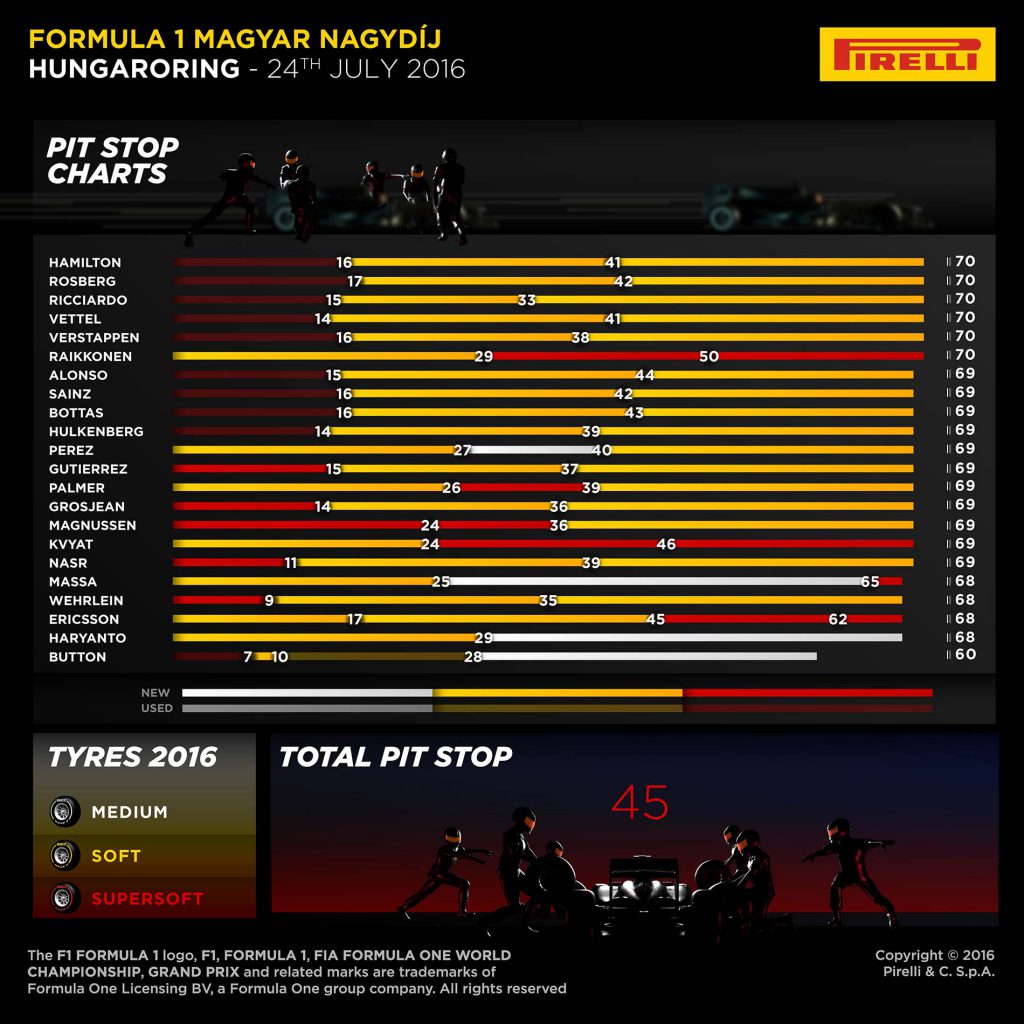
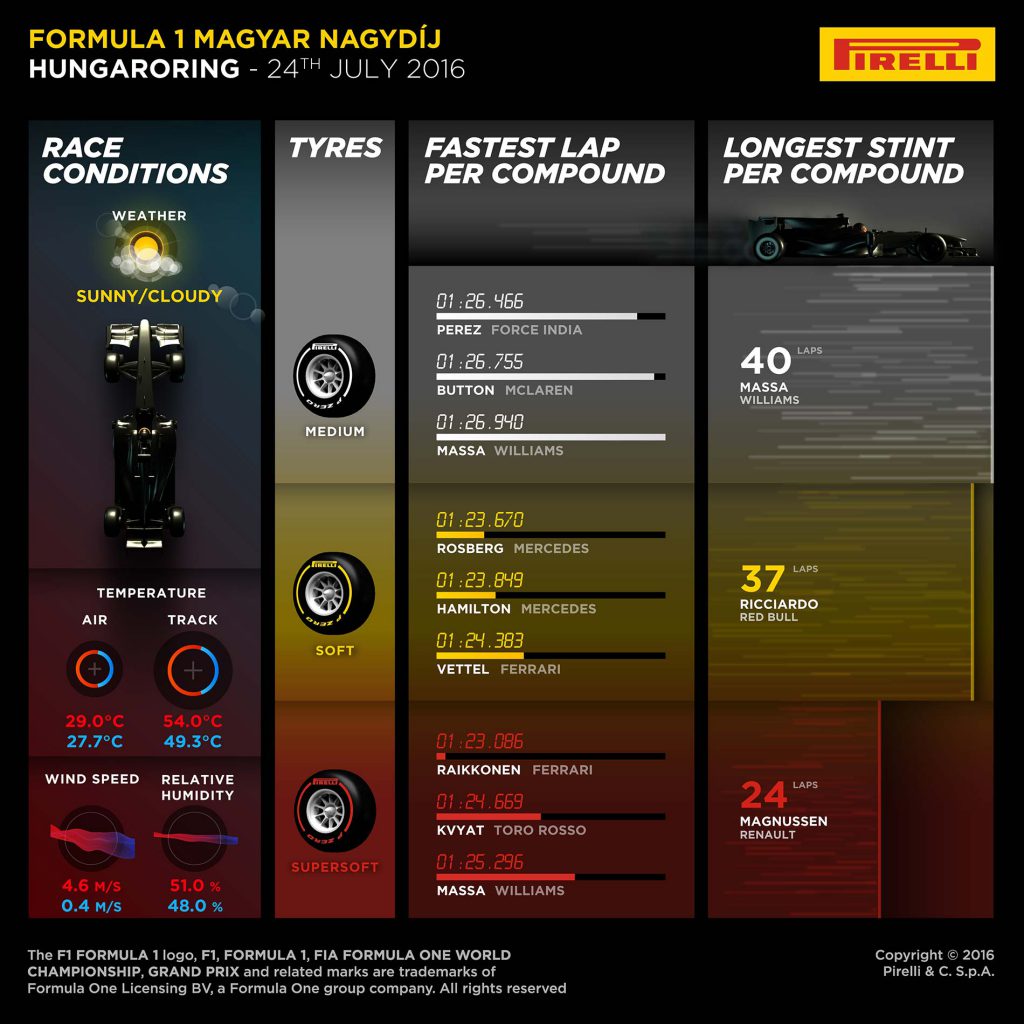
Stints by Driver
|
|
|||||||||||||||||||||||||||||||||||||||||||||||||||||||||||||||||||||||||||||||||||||||||||||||||||||||||||||||||||||||||||||||||||||||||||||||||||||||||||||||||||||||||||||||||||||||||||||||||||||||||||||||||||||||||||||||||||||||||||||||||||||||||||||||||||||||||||||||||||||||||||||||||||||||||||||||||||||||||||||||||||||||||||||||||||||||||||||||||||||||||||||||||||||||||||||||||||||||||||||||
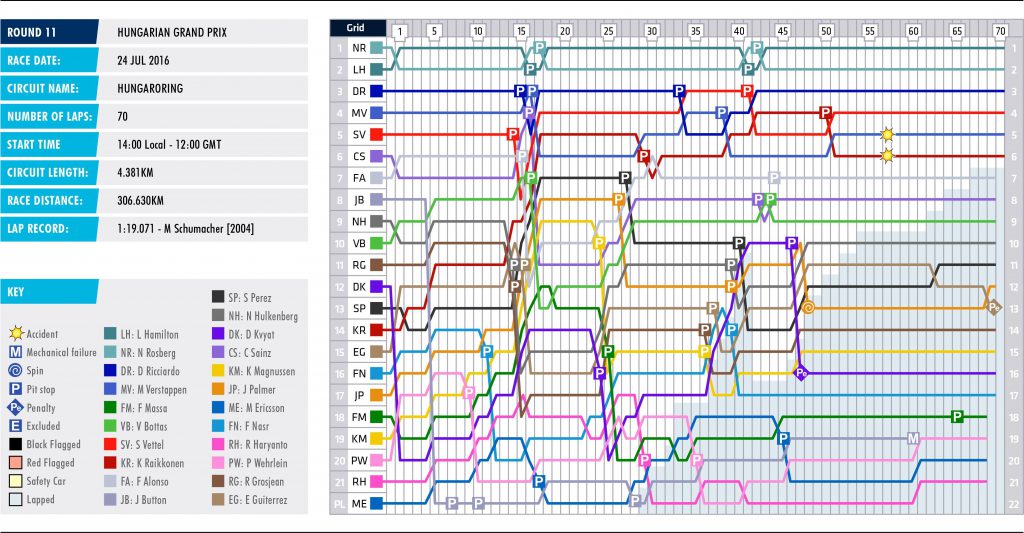


 Safety Car
Safety Car 3. Ricciardo
3. Ricciardo 5. Vettel
5. Vettel 6. Rosberg
6. Rosberg 8. Grosjean
8. Grosjean 9. Ericsson
9. Ericsson 11. Perez
11. Perez 14. Alonso
14. Alonso 19. Massa
19. Massa 20. Magnussen
20. Magnussen 26. Kvyat
26. Kvyat 88. Haryanto
88. Haryanto